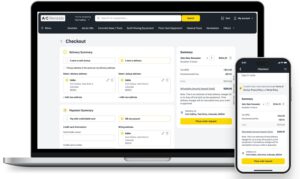mplate, built for rental business owners who want to track their assets using Excel or Google Sheets – no software required.
Download Our Free Equipment Rental Spreadsheet Template
![]()
![]()
We’ve created a free downloadable rental inventory tracker for Excel and Google Sheets. It’s perfect for small businesses just getting started or for those looking for a low-cost way to stay organized.
👉 Click here to download the spreadsheet template and start tracking your equipment today!
Table of Contents
- Why Inventory Management Matters
- How to Use the Equipment Rental Spreadsheet Template
- Other Equipment Rental Inventory Tips
- How to Easily Automate Rental Inventory Tracking
- Final Thoughts
Why Inventory Management Matters
If you’re renting out equipment, knowing what’s in stock and what’s out on a job site is essential. Keeping track of inspections, repairs, and equipment utilization helps prevent lost revenue and double bookings.
Digital spreadsheets like Excel or Google Sheets are a good starting point. They allow you to update your inventory in real time, track maintenance history, and even monitor revenue trends.
How to Use the Equipment Rental Spreadsheet Template
Our free equipment rental spreadsheet template is built with five key tabs that work together to give you a complete picture of your inventory, customer activity, and revenue trends. Here’s a breakdown of how to use each one:
1. Equipment Sheet
This tab is where you’ll input all of your inventory. It helps you track availability at a glance.
Here’s what to include:
- Asset Name – The name of the equipment (e.g., Mini Excavator)
- Asset Description – A short description of the item
- Daily Rental Rate – How much it rents for per day
- Total Inventory Count – The number of items you own
- Currently Rented – How many are out on rent
- In Stock – How many are available
At the top of the sheet, you’ll also find summary fields showing:
- Total number of items
- Number currently rented
- Number left in stock
This makes it easy to monitor what’s rented out versus what’s available.
2. Orders Sheet (Input Orders)
This tab tracks all of your rental contracts and order details.
For each rental order, fill in:
- Order Number
- Order Total
- Order Date
- Asset Information
- Quantity Rented
- Rental Start Date
- Return Date
- Customer Name
- Customer Address
- Phone Number
- Email Address
- Notes (optional)
This section gives you a complete history of transactions and helps with customer follow-ups, order tracking, and forecasting.
3. Top Customers Sheet
Track your highest-value customers and sort them by revenue to identify key accounts.
This tab includes:
- Customer Names
- Total Amount Spent
- Number of Orders
- Contact Details (optional)
Use this to recognize loyal customers and tailor marketing or loyalty incentives based on their order history.
4. Inventory Calendar
Get a visual snapshot of your inventory activity over a monthly period.
This tab allows you to:
- Track rentals by day for each product
- Monitor how many of an item are rented vs. in stock per day
- Analyze pricing and revenue on a per-day basis
This helps you spot demand trends, forecast inventory gaps, and adjust pricing or availability as needed.
5. Revenue Trends
Plot your daily revenue based on return dates to see how your income is tracking over time.
Input includes:
- Return Dates
- Order Totals per Day
This tab auto-generates a graph that visualizes daily revenue, helping you quickly spot high and low-performing time periods, ideal for forecasting and planning.
Recommended Reading: How Equipped Saved 10 Hours a Month by Automating Inventory Management with Quipli
Other Equipment Rental Inventory Tips
Spreadsheets are a great start, but long-term success comes from adopting best practices for inventory tracking. In our blog post on how to keep track of your rental inventory, we cover:
- How to categorize your equipment (e.g., trackable, bulk, or consumable)
- Why SKUs and photos matter for easy identification
- The importance of internal notes to track maintenance and usage
- How to price items effectively with flat or structured pricing models
If you’re not yet using software to manage your inventory, consider this your sign to level up. These tips will help you build a scalable process that’s ready for growth.
How to Easily Automate Rental Inventory Tracking
Spreadsheets work, but they come with limitations – especially when your business starts scaling. That’s where Quipli comes in.
With Quipli, you can automate rental inventory tracking in just a few clicks. Here’s what you get:
- Live inventory availability synced across your storefront, calendar, and internal system
- Built-in inventory calendars showing what’s rented and what’s ready to go
- Customer and contract info connected to each rental
- Mobile access for checking inventory status on the go
No more juggling spreadsheets, hunting down order info, or risking double bookings. Quipli brings everything together in one simple platform.
Want to see it in action? Book a demo with our team today.
Final Thoughts
Whether you’re just starting out or looking to improve your rental operations, a clear system for inventory management is a must. Our free spreadsheet template is a great way to get started, giving you an organized view of your assets, customers, and revenue. And when you’re ready to scale, tools like Quipli can help you save time and avoid costly errors.








